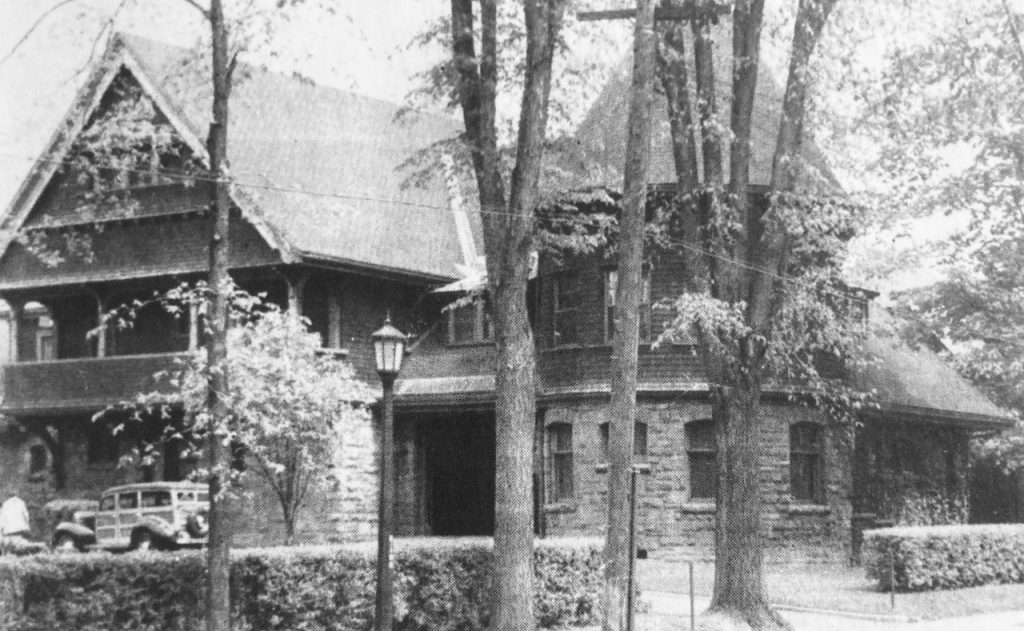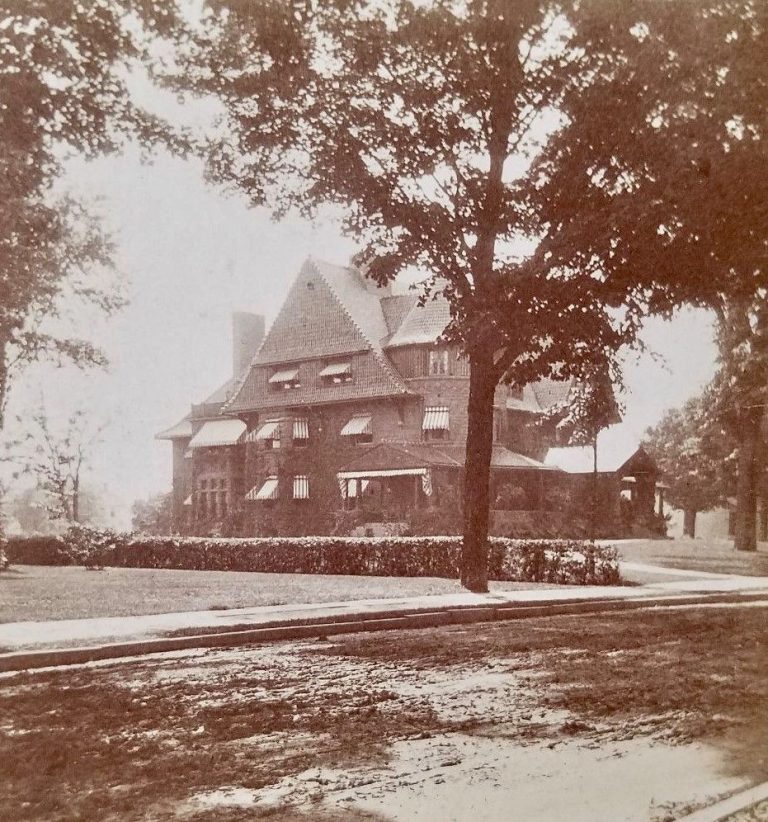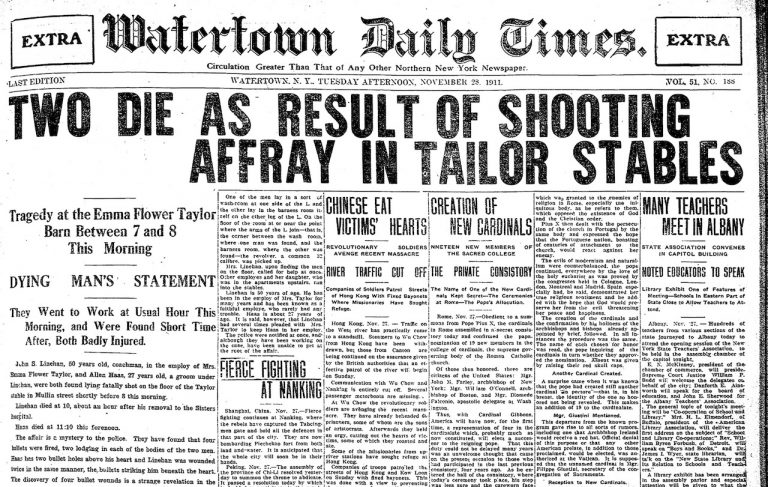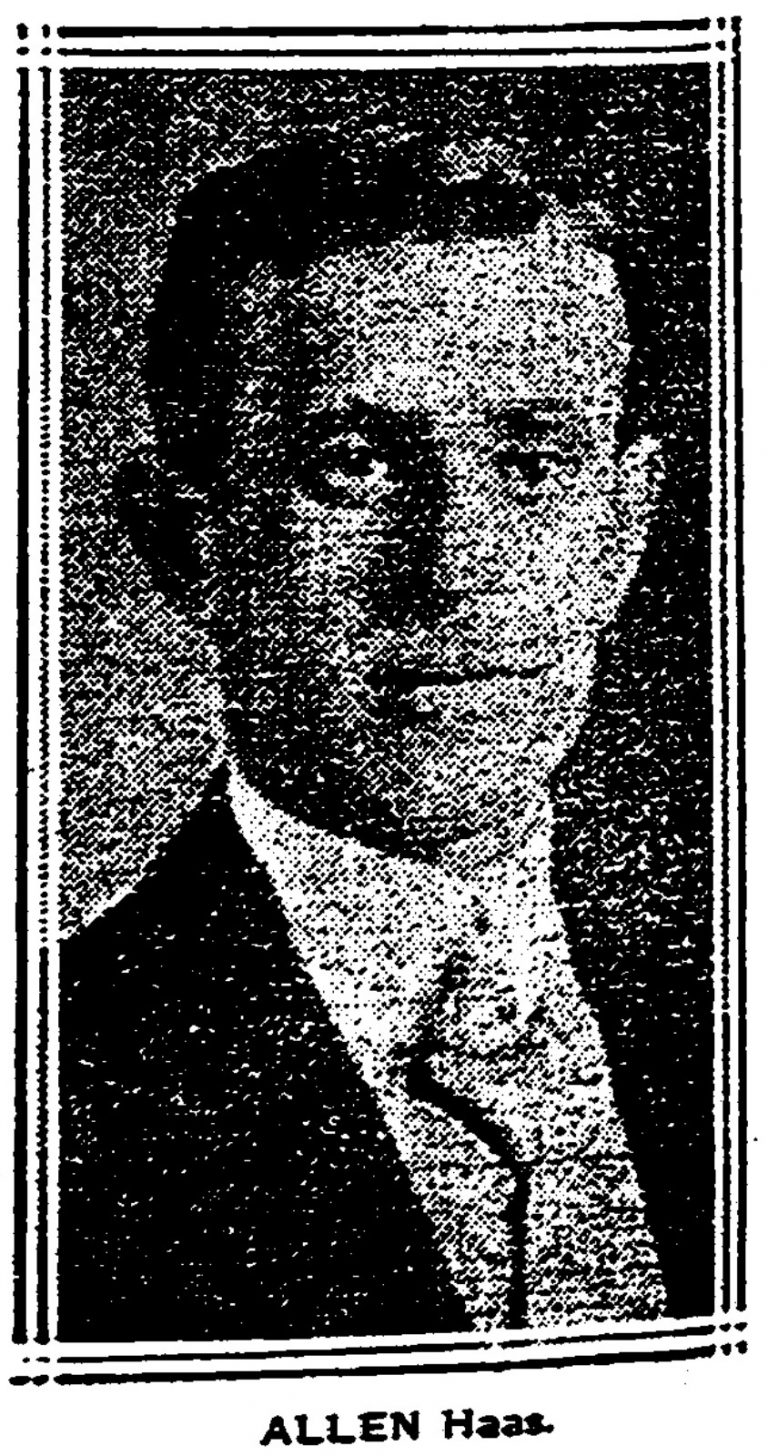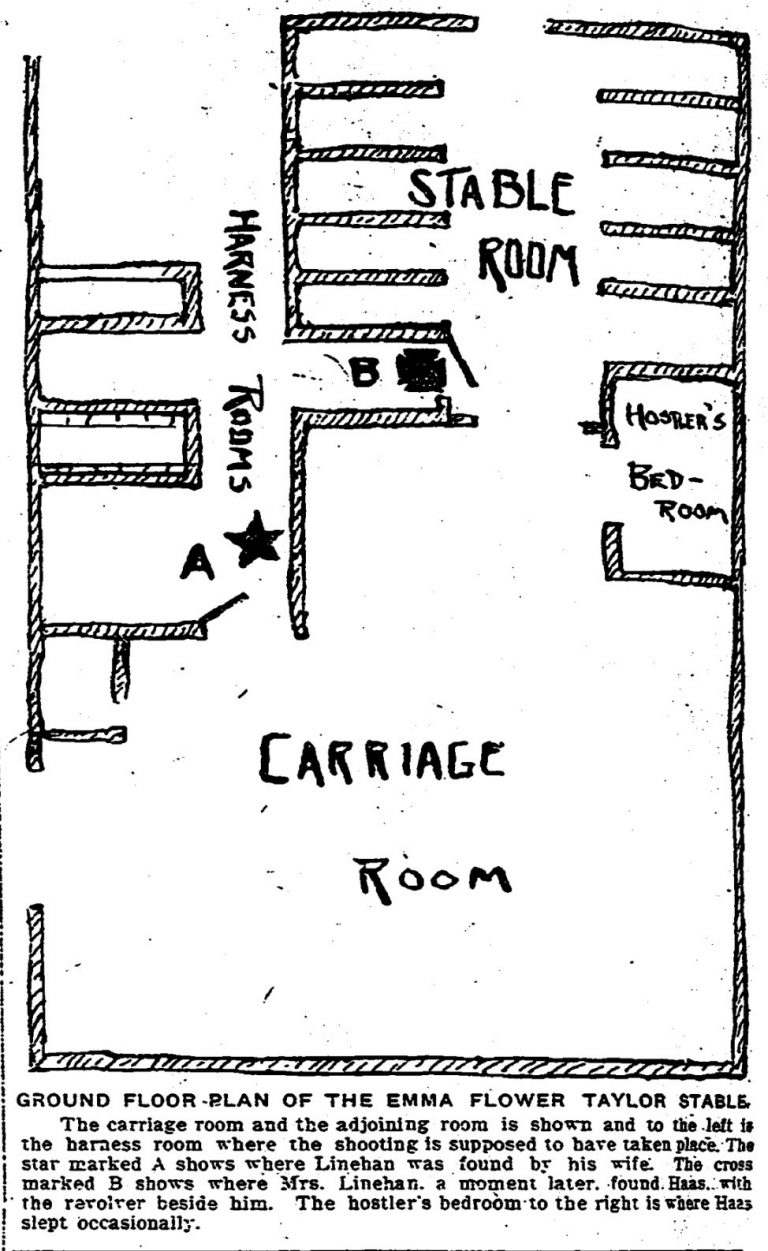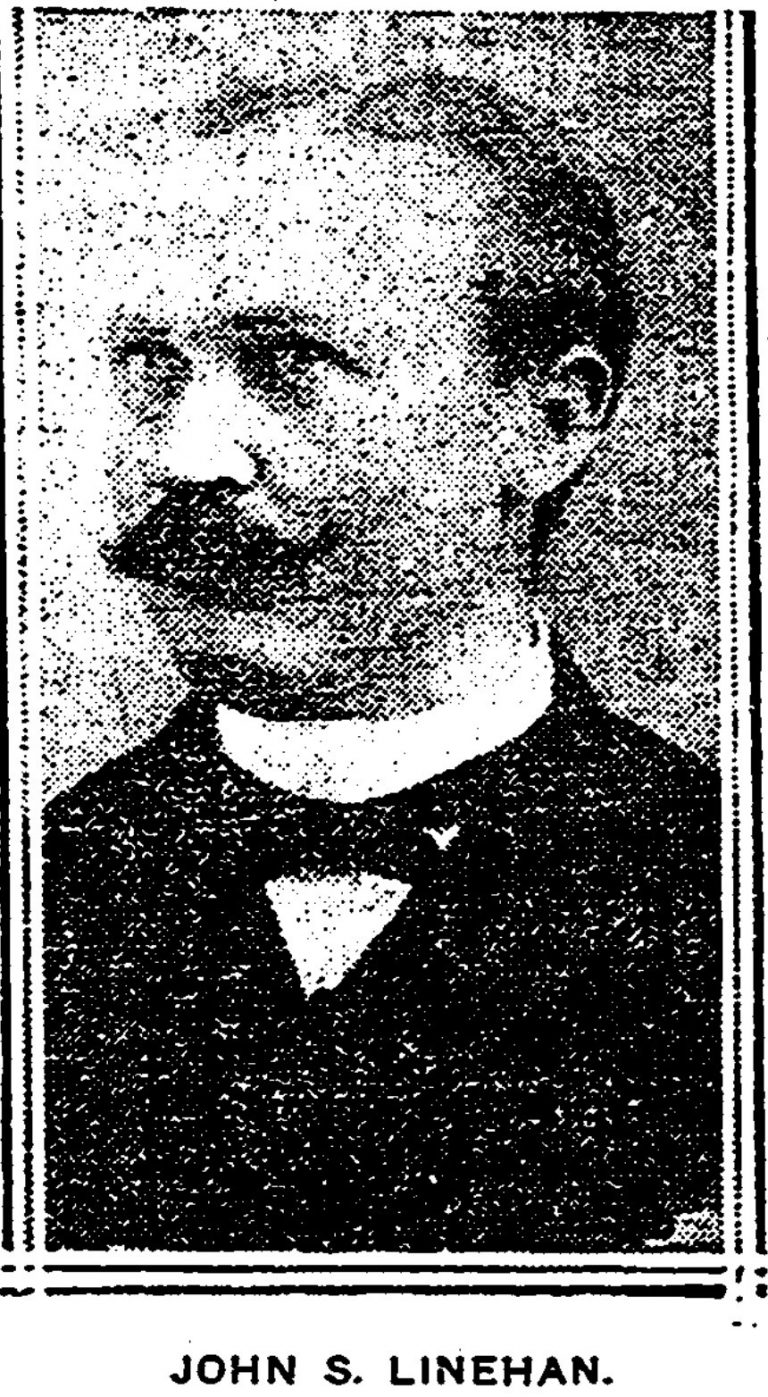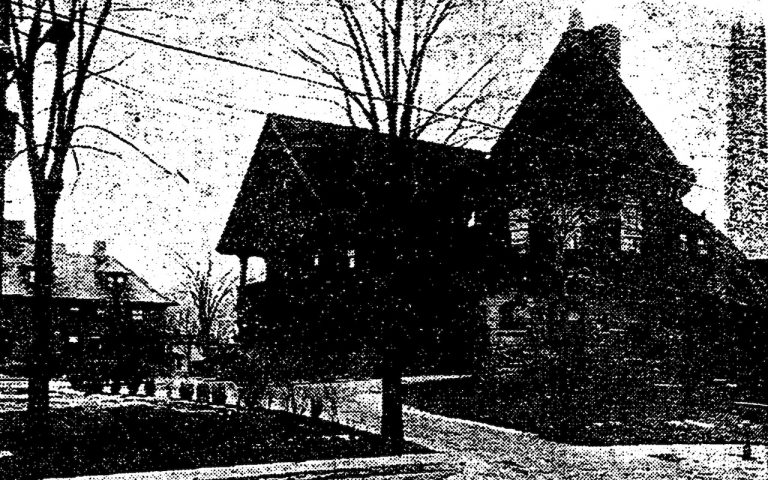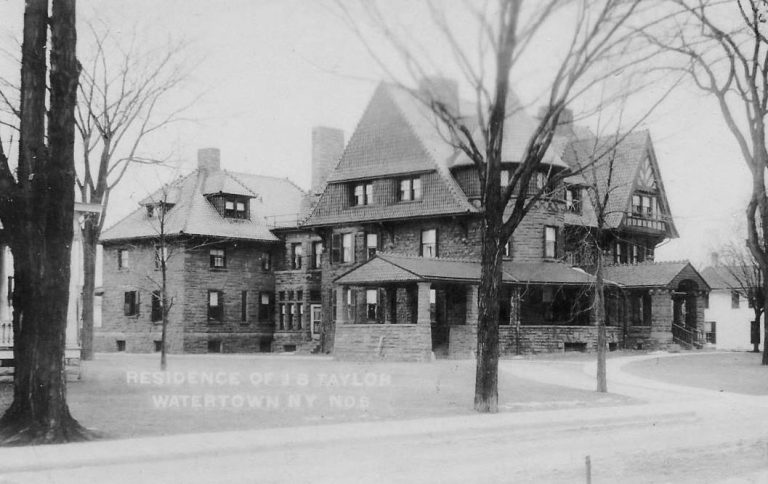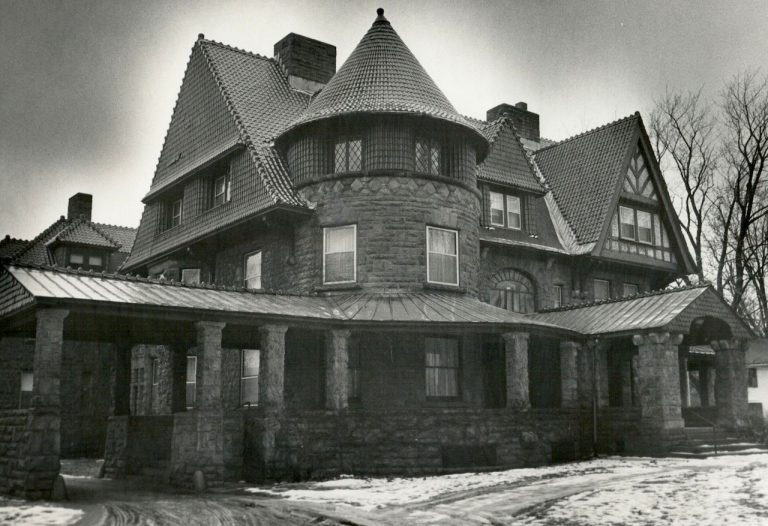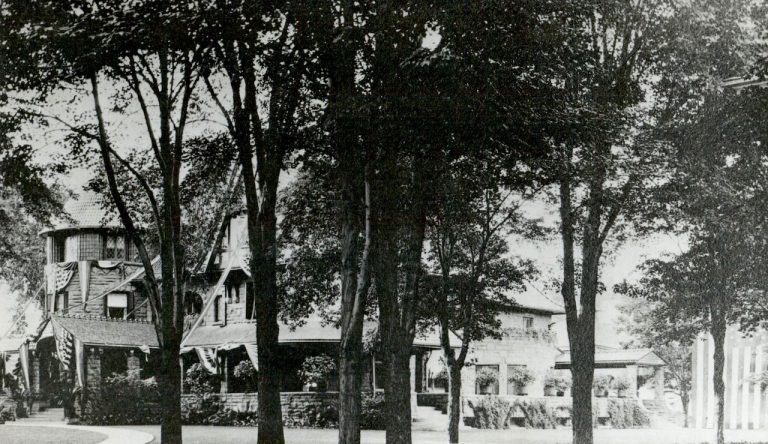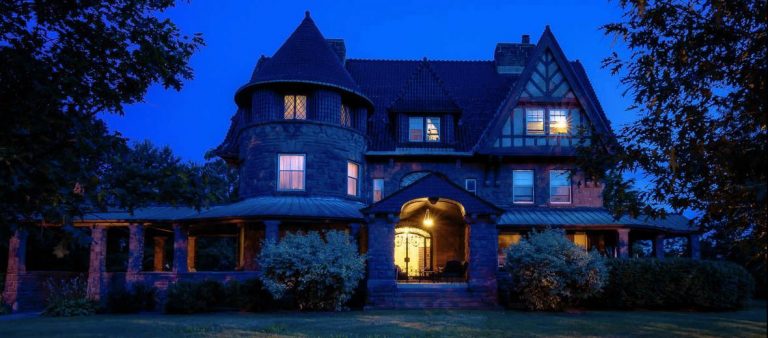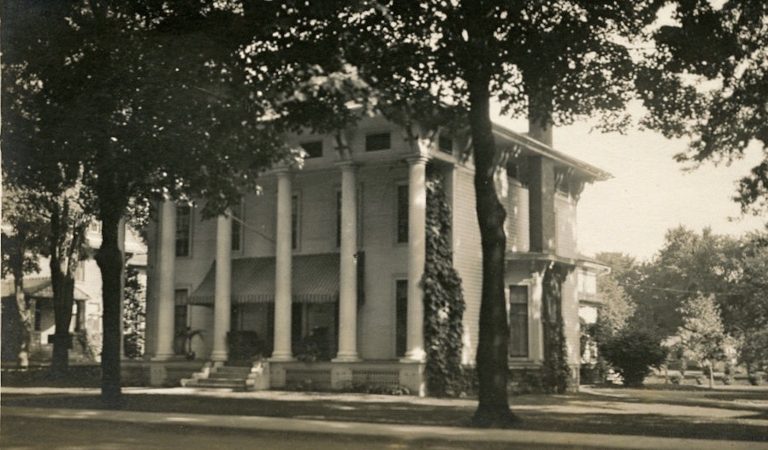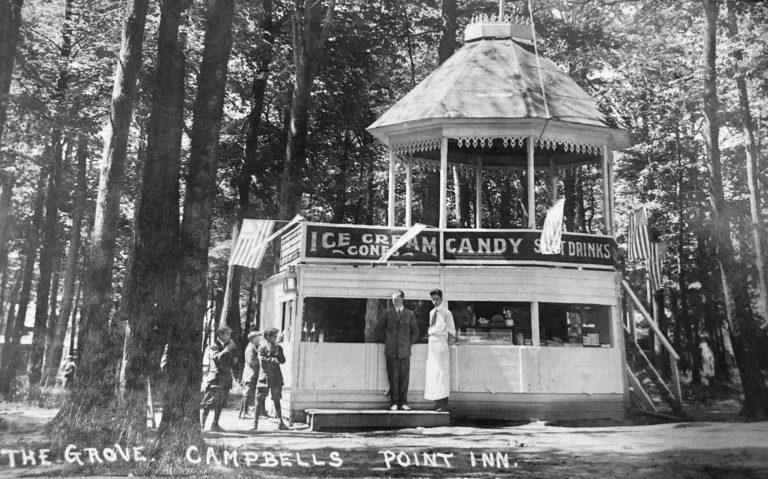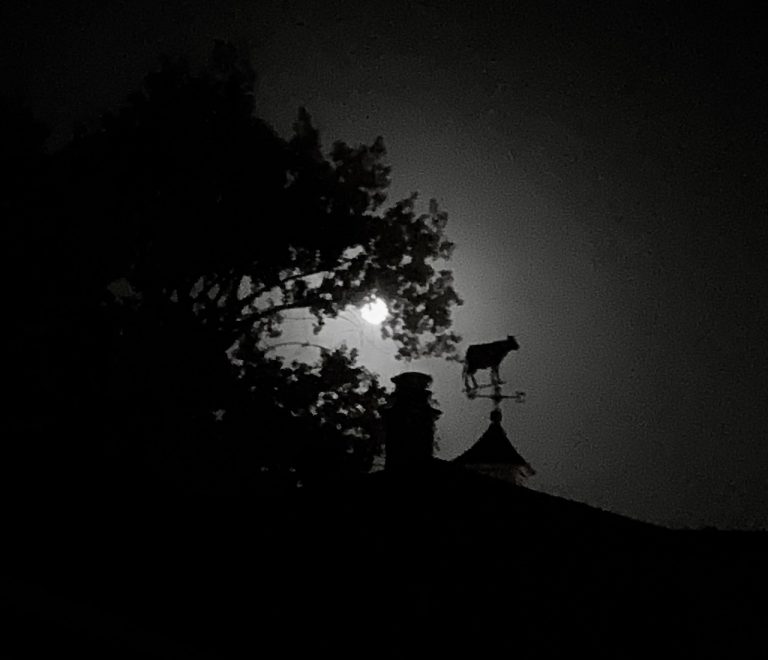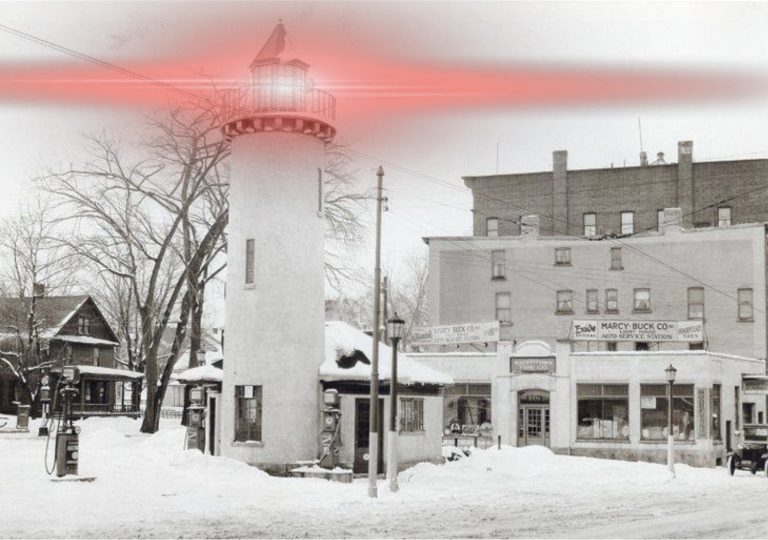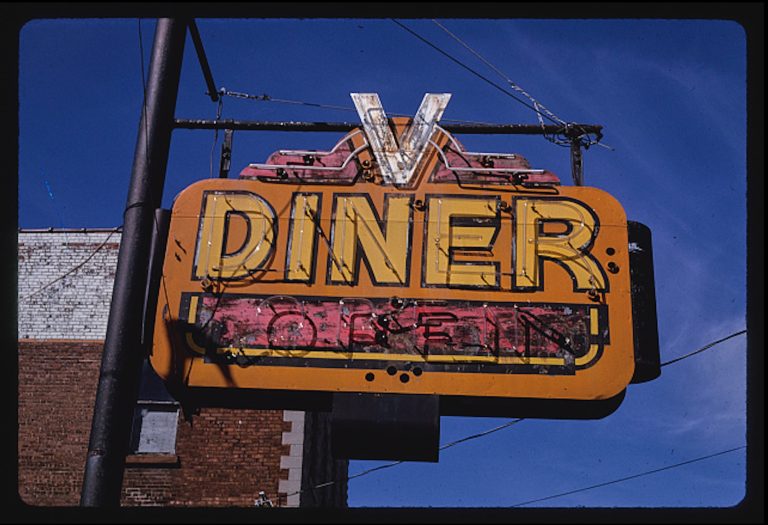The Emma Flower Taylor Stable Murders – Double Murder By Shooting Still Unsolved
The Taylor stable murders are one of the more intriguing unsolved murders in local history, dating back 111 years now. The double homicide and investigation seemed straight out of a Sherlock Holmes story and happened on the property of one of Watertown’s most beloved citizens, Mrs. Emma Flower Taylor, in the stables her then ex-husband J. B. Taylor had erected on Mullin Street behind the Emma Flower Taylor mansion just a few years after it was completed.
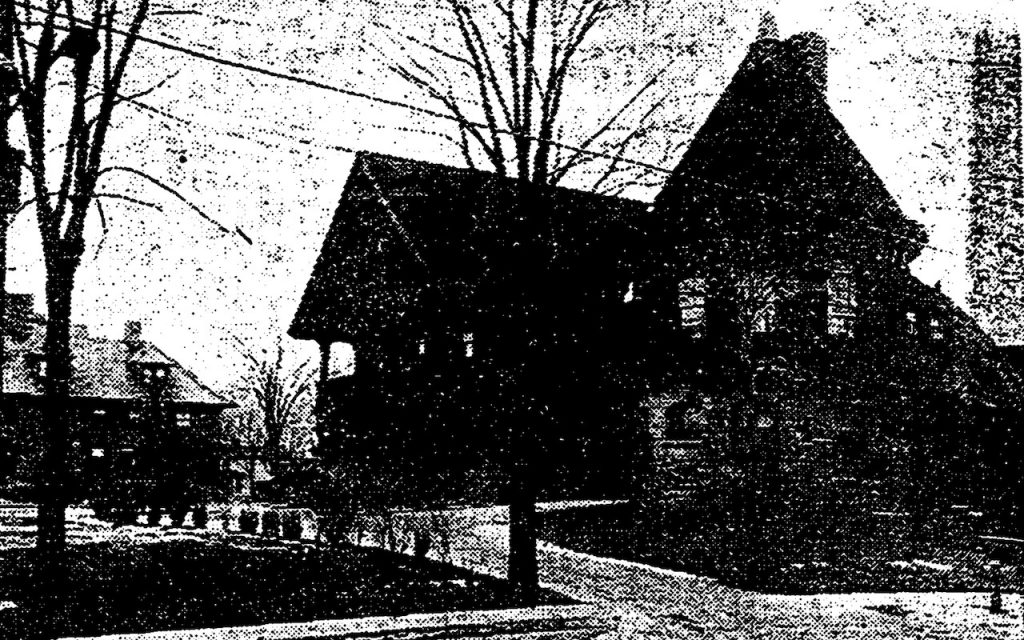
On the morning of Tuesday, November 28, 1911, two employees of Emma Flower Taylor were found on the floor inside the stables, both having been shot. The two men, John S. Linehan, 49-year-old coachman, and Allen Hawes (incorrectly reported as Haas during the events), his 30-year-old groom working under him, accused each other of the shooting as they lay dying on the floor where only one gun was found.
Hawes, a married father of two young children (a four-month-old and a two-year-old), lived on the North Side of town on Lansing Street just a few years before the creation of the community Lansingdorp as a result of WWI manufacturing efforts at the Air Brake. Police would discover through their early investigation that Hawes had expected to lose his job before the week was out and had been “grouchy” much of the previous week.

The Watertown Daily Times reported on the day of the Taylor stable murders—
Yesterday he (Hawes) drove a horse a little longer than usual. When he came in, Linehan is said to have upbraided him for it. This, coupled with the fact that he expected to lose his job, may have accounted for the trouble the police say.
Linehan spent over half his life, 29 years according to the times, working at the stable (Linehan had been employed by Roswell P. Flower in New York City and moved to Watertown, which accounts for the total number of years.) He was survived by a wife and three grown children, it was said that he never had any trouble with anybody. When Emma Flower Taylor spoke of letting Hawes go, Linehan spoke up for him and asked to give him another chance.
As the Times reported the day of the Taylor stable murders—
The men were found on the floor of the stable by Mrs. Linehan between 7:30 and 8. No shots were heard in the Linehan apartment, which are in the same building directly over the stables, but Mrs. Linehan heard the sound of groans and on going down stairs found the two men.
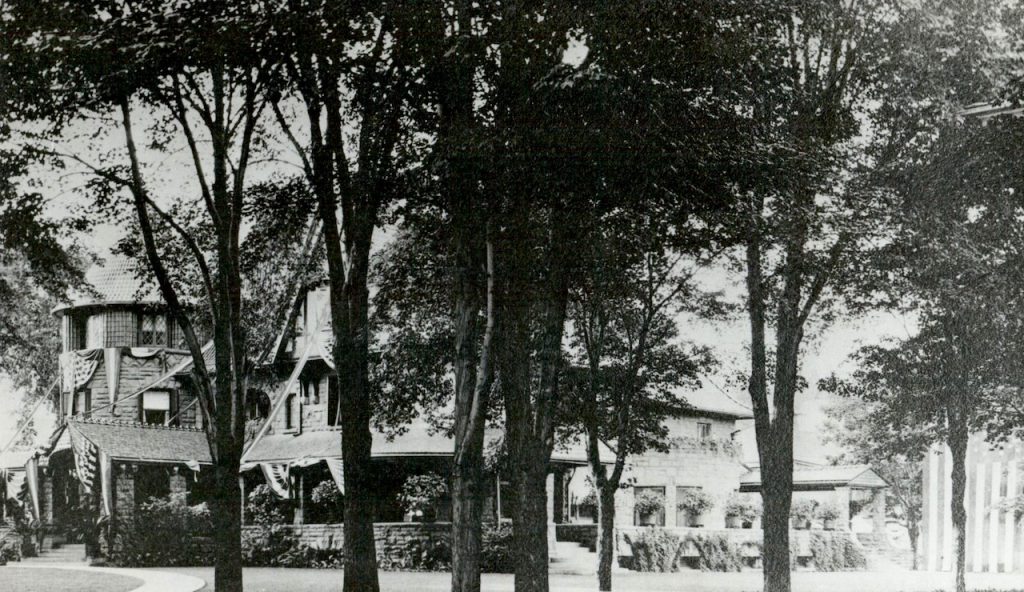
In 2005, and updated in 2019, Times reporter David Shampine would provide some initial responses that weren’t published back on the day of the Taylor stable murders or in the proceeding days when the mystery deepened. As Mrs. Linehan descended the stairs to the stable, she would find her husband on the floor, lying on his right side.
“For God’s sake, what’s the matter?” she said as she knelt beside him.
“Allen shot me,” she later quoted him as saying.
Mrs. Linehan rushed to the coach house door, started to open it to call for help, and saw that Allan Hawes was also down on the floor. She closed the door and returned to her husband’s side, where she was immediately joined by Monica.
Rudolph Johnson, Emma Flower Taylor’s butler, would note later that a disturbance at the door awakened him and that Mrs. Linehan had cried out, “The boys have shot themselves!”
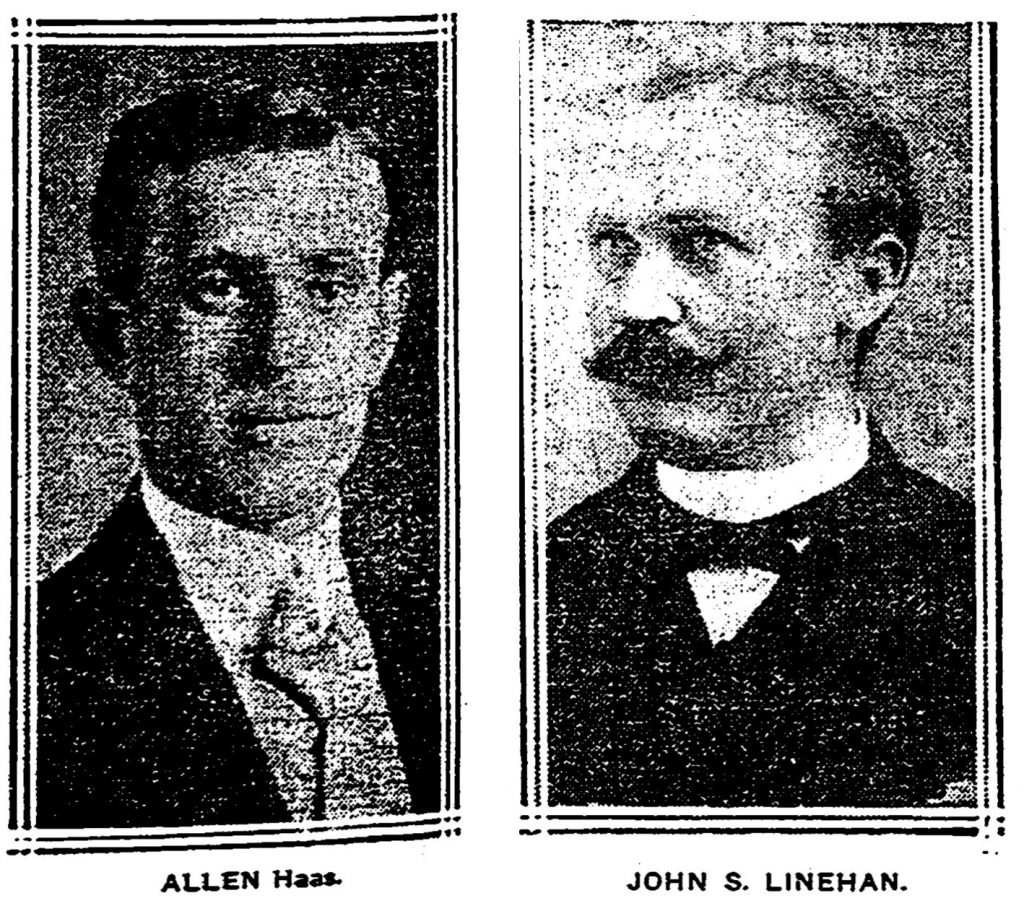
As Hawes lay in a pool of blood, something else was on the floor about a foot from his right hand: a .32 caliber Forehand & Wadsworth double action revolver with a cylinder capable of holding six cartridges, yet only three of the chambers had been fired and the gun was broken. Complicating matters further was that the gun didn’t belong, nor was it registered to, either of the two victims, and none of the other stable workers had ever seen it. In the corner of the room were four empty shells.
At this point, it was unknown how many times each person had been shot. After the police and Dr. Kellow arrived, Linehan was moved from the floor to a temporary bed until the arrival of an ambulance. Barely conscious, weakened, and in shock, he would say little before being removed to St. Joachim Hospital on Stone Street.
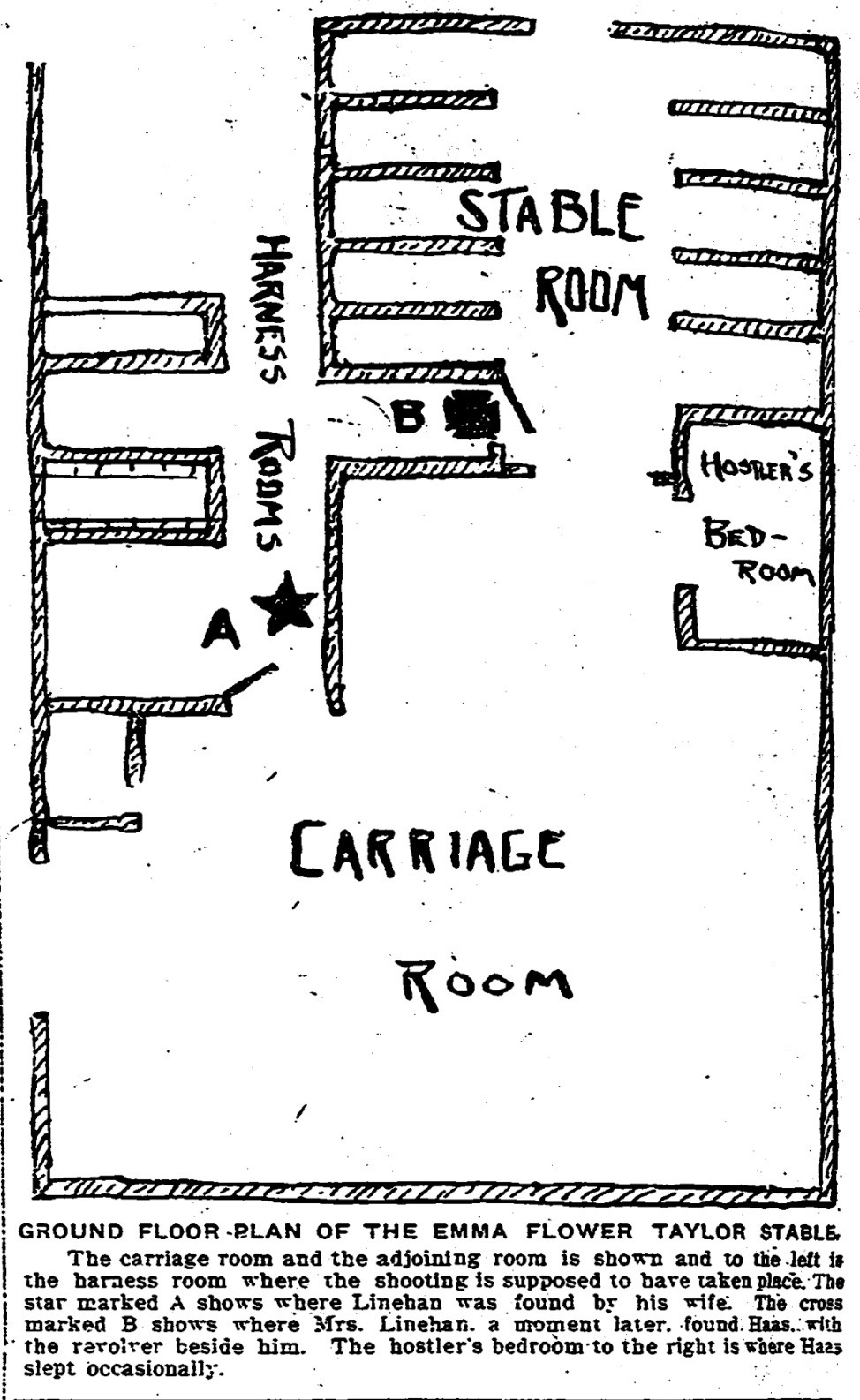
Hawes was placed in a smaller room where he made “a brief and most unsatisfactory statement to Captain Singleton and Dr. Kellow,” as the Times reported—
“I didn’t do the shooting,” was a part of the brief statement made by Hawes as he lay on the bed in the stable. “Linehan did the shooting. I found the revolver under my bed.”
When they asked Hawes if he had any trouble with Linehan, he said, “Yes.” Asked what the trouble was he said he didn’t know. Other questions put to him brought forth equally unsatisfactory replies and finally, when the ambulance had arrived to take the men to the hospital, Hawes was greatly weakened and could say nothing more.
At the hospital, Linehan, on his deathbed, would state shortly before passing away at 10 a.m. “I did not do the shooting.” He would struggle to continue, whispering, “It was done by Hawes.” Detective Captain E. J. Singleton, Rev. F. W. Eason, and Francis Linehan, a son, heard this statement.
Linehan’s daughter, Monica, told the Times when asked if any trouble had existed between the two men—
“Why, no, they ever had the least bit of trouble to my knowledge. My father always stood up for Hawes and once or twice, when Mrs. Taylor wanted to discharge him, my father took his part and saved him his job. On one instance Hawes pleaded with father to help him. He said he had a wife and children to support. And my father used his influence to retain the position for the man. No, I don’t know of any trouble at all between the two.”
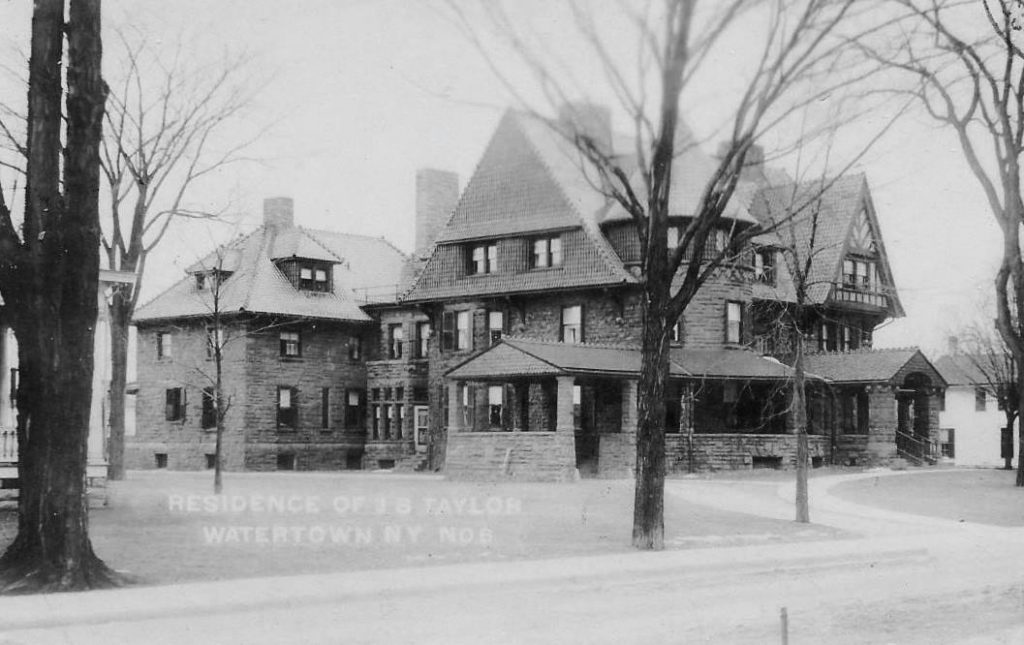
Miss Linehan was in tears when she finished her statement and begged that as little of her statement as possible be used in the papers. Linehan would pass away around 10 a.m., with Hawes following about an hour or so later, but not before protesting innocence to Coroner Herbert L. Smith—
“I asked him,” said Coroner Smith, “if he did the shooting.He told me he did not. Then I asked him who did do the shooting. He replied that Linehan did the shooting.I asked him if he would swear to that and he said he would. I asked him, too, if they had been fighting. Hawes hesitated a little, stopped a moment and then said that the two were engaged in a struggle.”
Despite what Hawes had said, there were no signs of a struggle present in the stable or later during the autopsies of both individuals.
Autopsy Results Deepen Mystery Even Further
As the Times stated on the 29th, “(the tangled web of mystery) is more confusing than ever, as a result of the autopsy performed upon the bodies of the two men last night.” It was found that both men had been shot twice; two bullets, .32 caliber, were in each body. The gun in question held six, with three remaining added to the mystery, as did the forensic findings.
Dr. G. D. Gregor examined the wounds of Mr. Linehan and said their position on his body would make it impossible for Linehan to have held the revolver that inflicted the wounds. The Times would note that there was a large pool of blood under Hawes, but not under Linehan, which couldn’t be accounted for.
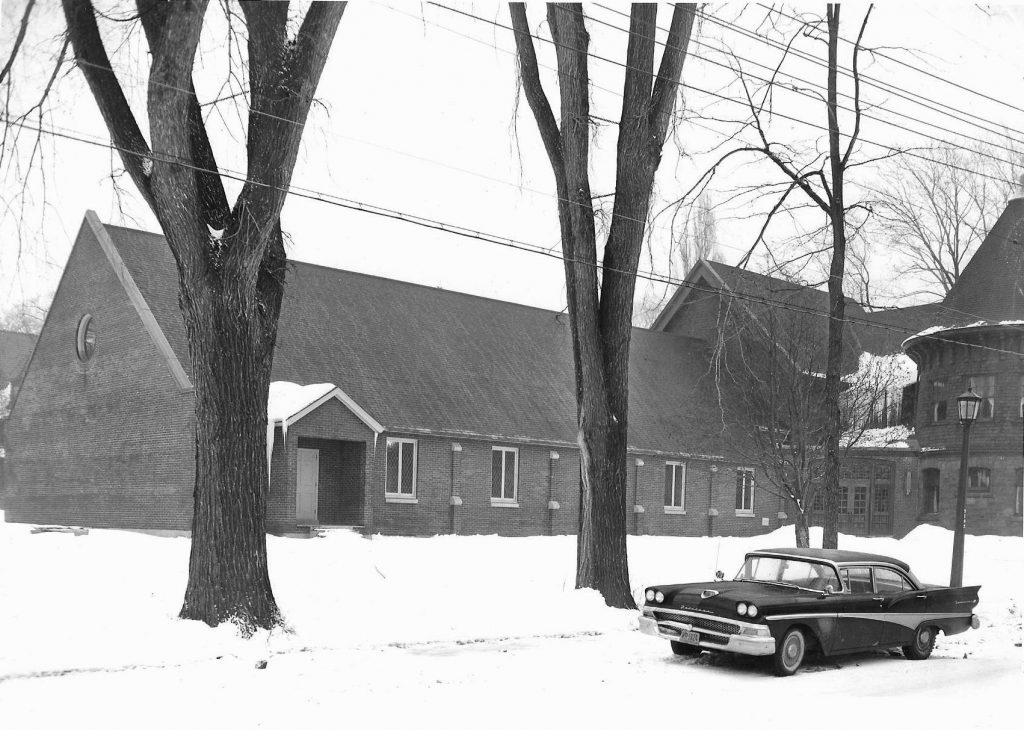
Dr. Kellow noted Linhan’s wounds were burned and blackened with powder, as was his sweater – evidence that the shots were fired at close range. Yet, Hawes’s autopsy only proved to deepen the mystery even further. One of his wounds was caused by a bullet fired from a distance. “This, in itself, the police hold, would make it a physical impossibility for Hawes to have fired but one of the two bullets that entered his breast,” the Times noted.
Indeed, Drs. O. C. Eastman and J. D. Olin, who performed the autopsy on Hawes, noted the second bullet, which struck the breast bone, was torn much more than the other, which was cleaner and sharply defined while the shirt above the wound was burned from the shot. The statement from the coroner read—
“It seems as though the bullet on the second would must have come from a distance,” said Coroner Smith. “It wouldn’t seem as though a man could have held it in his own hand and shot himself without the shot having produced more effect than the second one did without burning and blackening the clothing. Possibly, though, it could be done.”
Though she was not home at the time of the Taylor stable murders and offered no official statement, it was said that Mrs. Emma Flower Taylor, who returned from New York City the day after the deaths, was “greatly disturbed over the whole affair.”
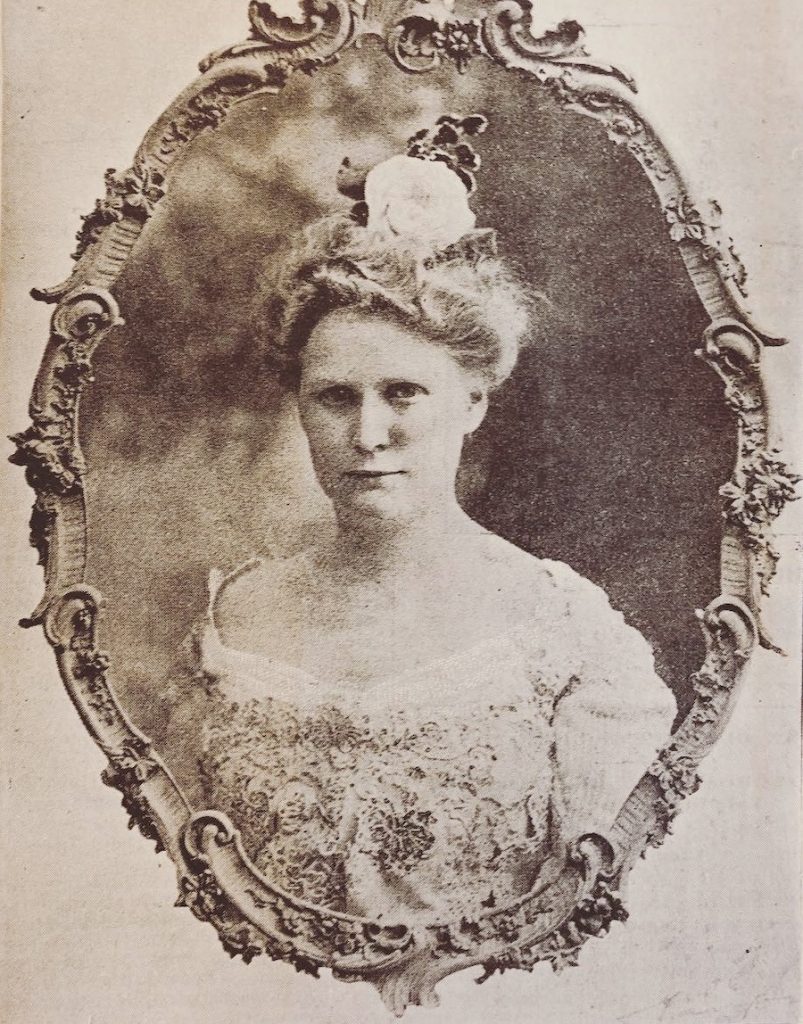
One theory suggested was that a third party was responsible for the Taylor stable murders. The police believed one of the men was responsible for the shooting, mostly because each said the other did it. It was also believed that finding the owner of the revolver may lead to a break in the case – but that information remains a mystery to this day.
Another theory suggested two guns were used. This was noted in the Daily Times on the 29th, the day after the shootings—
Chief of Police Baxter today advanced the theory that two revolvers were used in the shooting rather than the one. The chief bases his theory on the finding of but three chambers in the revolver discharged, while there were four bullets found in the two bodies and four empty shells found on the wash room floor.
Three of these shells show a similar mark where the revolver firing pin made contact with the percussion cap. The fourth bears a slightly different mark. That strengthens the theory of a second revolver. However, no such weapon has been found on the premises. The police say that in their belief the wounds received by Linehan were of such a nature that he would be able to keep his feet for some time before weakening. In that case the revolver could have been safely hidden in some unknown corner of the stable.
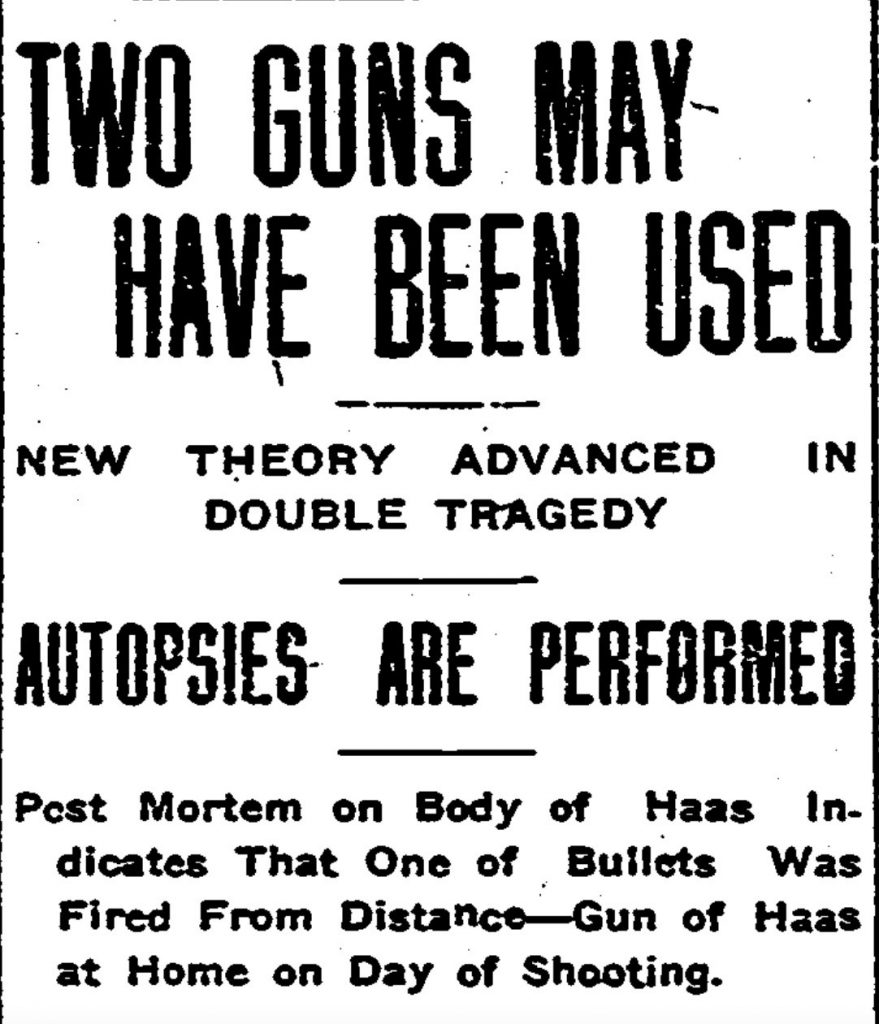
The case for a second gun involved in the Taylor stable murders was further strengthened when a fifth bullet was found embedded in the wall of the building directly across the stable from the door of the washroom where Hawes was discovered on the floor. Its shell was also found on the washroom floor, both the bullet and shell being a .32 caliber, adding more fuel to Linehan being the shooter as it was in the direct line of the harness room where Linehan was found.
Of particular note, both men had life insurance policies worth $2,000. As reported in the June 19, 2005, article in the Watertown Daily Times, later updated on May 28, 2019—
Two things suggested that John Linehan expected to die soon.
He and Mr. Hawes had $2,000 life policies with the Lodge of Modern Woodmen of America. According to the policies, benefits would be paid for suicide and murder, but not if they were engaged in a duel.
Daniel C. Phelps, a lodge member, told of a chat he’d had with John Linehan the day before the shooting. Mr. Linehan told him he would have to get to the next lodge meeting and pay his dues and then asked if insurance would be paid if anything happened to him and the premiums were not paid. No payment would be made, Mr. Phelps advised him.
But the payment was not due until a few days after the shooting. Mr. Linehan did not pay the premium.
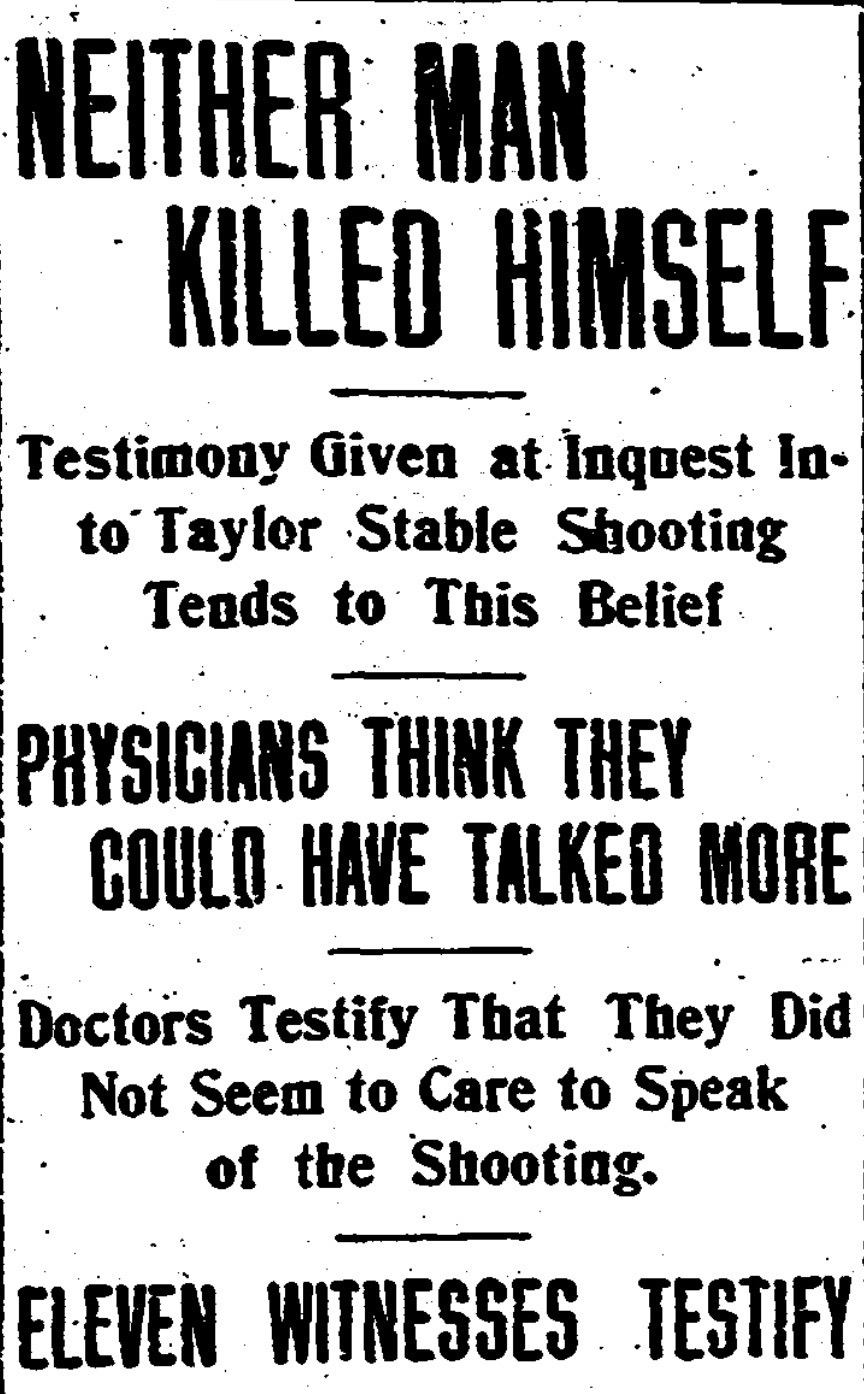
A few days before the Taylor stable murders, Linehan had inexplicably sold his horses and noted if anything were to happen to him, they would’ve been a burden to his family. Though he had told his son Joseph that he would deposit the proceeds in an account at the Watertown National Bank, he never did and the money was never accounted for.
Linehan’s son would later testify that his father sold the horses because “When a horse loses speed it will eat its head off.” The horses were sold to a man in Kingston, according to Mr. Harrison’s testimony, which stated that Linehan had expressed the opinion he “did not think he was long for this world.”
Hawes, meanwhile, appeared to have money issues and a tendency to live above his means. One of the reasons why Mrs. Emma Flower Taylor, whose divorce from J. B. Taylor, who hired Hawes, was finalized the prior year, considered letting Hawes go was his inability to pay his bills for which she had on occasion paid him in advance.
During the inquest, Mrs. Taylor would state Mr. Linehan said, “Let’s try him a little longer. He is young yet and may see the folly of running up bills. He has a wife and children, and I hate to let him go.” Likewise, another participant in the inquest noted Hawes had said that Mr. Linehan was a good man to work for. Mrs. Taylor would make it a point, meaning to not speak negatively of Mr. Hawes and had found him rather pleasant in their interactions.
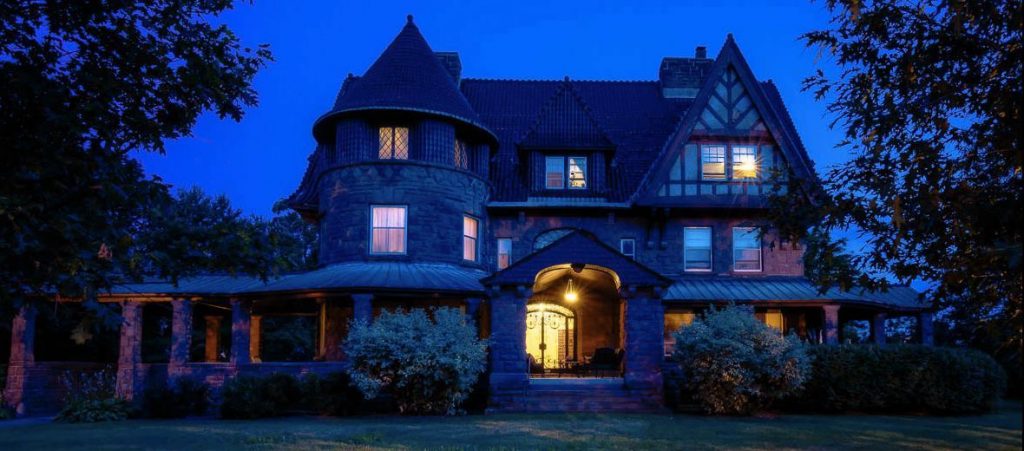
According to the attending physicians at the scene of the crime, neither victim appeared willing to discuss the shooting itself. It was unanimously noted that, despite their condition, both were capable of talking and did so, but when it came to the questions of the shooting itself, little information was provided other than laying blame on one another. It would later be stated that, when the priest was at the hospital and speaking to Hawes with regards to final words with regards to the shooting, Hawes turned his head away.
In early January of 1912, Coroner Smith would hold another inquest featuring Mrs. Emma Flower Taylor and her son, Frederick Taylor, who had nothing new to add to the case. Mr. Johnson, Taylor’s butler, would throw another curve into the case, stating that as Hawes was on the floor in the stable, twice he had said he did not know who had shot him.
The Coroner’s Verdict, Four Months Later
Coroner Dr. Herbert L. Smith would not reach a verdict on the Taylor stable murders until March 20, 1912. The Watertown Daily Times reported—
Coroner Herbert L. Smith today made public his decision in the Linehan-Hawes shooting affray of Nov. 28. Aside from establishing the place, manner and cause of death, the coroner is able, from the evidence before him, to throw little new light upon the mystery.
He determines, however, that one revolver was used in the firing of five shots known to have been discharged at the time of the homicide, but whether one or both of the men engaged in the actual shooting he has no evidence to prove. That the affair was sudden inception and not premeditated the night previous is his opinion, while the families of both men are declared to have been entirely unconscious of any trouble between the men until the discovery of the crime.
The coroner’s decision takes the form of a memorandum in which he presents the evidence as established by the inquest, thereby proving his contention that it is impossible to decide, without entering the realm of conjecture, who fired the fatal shots.

After summarizing the details and findings of the inquests, Dr. Smith concluded with—
As to the cause; who was the aggressor, or if there was a third party, who did the shooting, or if one of these two men became suddenly deranged, I am unable to state. Now, therefore, I find and decide that there has been no evidence obtainable whereby I can clearly show either the guilt or innocence of John Linehan or Allen Hawes.
Signed, this 20 day of March, 1912.
H. L. Smith,
Coroner.
Final Thoughts on the Taylor Stable Murders
There are many peculiar details within the Taylor stable murders, to say the least. Amongst them, and chiefly, the two victims claiming to be shot by the other and Hawes’s initial statement to the butler Rudolph Johnson that he didn’t know who did it; the refusal by Linehan and Hawes to discuss anything regarding the shooting, though they both appeared to be quite able to talk at the time of their discovery; some of the things Linhan discussed with others (and things he did) before the shooting; that five shots were fired and the gun needing to be reloaded, with two bullets in each victim; and the finding that neither victim shot themself.
What might be the most peculiar thing mentioned, yet not discussed or further expounded upon considering the circumstances, was in contradiction to everything else that followed the finding of the victims and the subsequent investigation that resulted in at least 41 witnesses testifying in an attempt to find out what exactly happened that morning.
The butler, the doctors, the priest, etc., all asked Linehan and Hawes who shot who. Nearly three and a half months were spent trying to piece the events together, yet the very first person on the crime scene, Mrs. Linehan, had already concluded in moments as to what had happened by crying, “The boys have shot themselves!” Curious words, indeed; “themselves” as in self-inflicted suicide, or just a matter of bad semantics having meant each other?

Add to this that five shots were fired, but not heard. The justification for this is that Mrs. Linehan has been on the floor above the stables and some sixty feet further down a hallway. Sixty feet is only twenty yards and ten feet wider than a basketball court. It seems rather hard to believe that a) no shots were heard and b) neither victim cried for help after being shot. They only moaned, which was only heard once Mrs. Linehan was in earshot.
This isn’t to say Mrs. Linehan was responsible anyway, but, much like the Hawes family, it may leave some to believe she knew more than what she was telling. Today, it’s still a mystery, furthered with irony by the fact that, in the same year of 1911, Thomas Jennings was the first person to be convicted of murder in the United States based on fingerprint evidence.
Not once were fingerprints mentioned in the investigation of the Taylor Stable murders.
